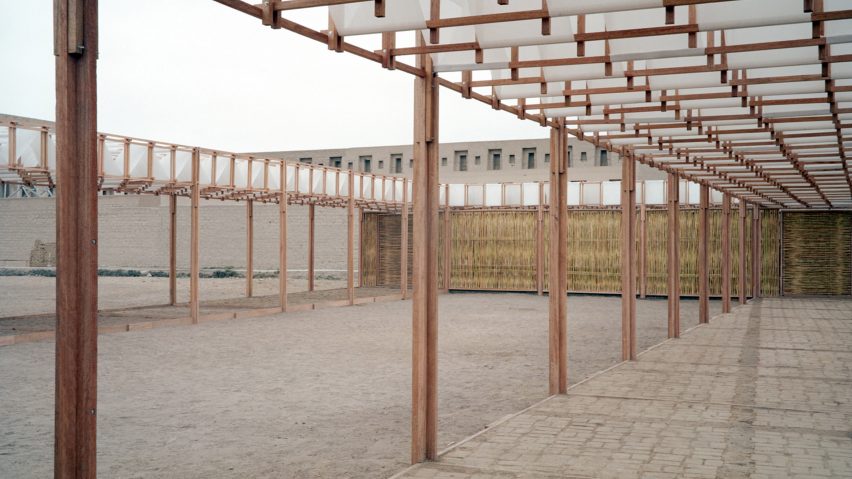This week on Dezeen, we revealed the winning architecture, interior and design projects for Dezeen Awards 2019.
Ten category winners were announced in each sector, including a shelter built by students for archaeologists in Peru in architecture, a 17.6-square-metre micro flat in Taipei in interiors, and a self-cleaning water bottle in design.
One of the ten category winners will be given the overall architecture, interiors and design project of the year prizes at the Dezeen Awards 2019 party, which is taking place in London on 30 October.
Other successful projects include a digitally designed and robotically fabricated structure in the design sector, and a black, 55-square-metre house in the Netherlands designed to look like a minimalist sculpture in interiors.
In the architecture sector, a boutique eco-resort situated among the rocky pinnacles of the Li River valley in China won hospitality building of the year, while a former locomotive shed that now serves as a public library won rebirth project of the year.
Elsewhere in architecture news, modular, plywood boxes were assembled by climate change activists Extinction Rebellion this week, to act as lock-on sites, towers and stages for the protests taking place across London.
The blocks were adapted from Studio Bark's U-Build system, which were re-designed to be simple enough that complete novices can build them, with just one shape of box and an easier bolt system.
London-based architect Mikhail Riches also fought for the planet this week, as co-founder Annalie Riches told Dezeen that they will only work on zero-carbon projects from now on.
The Stirling Prize-winner said that the practice was committed to improving the environmental performance of its projects after winning the UK's top architecture prize for the low-energy social housing scheme, called Goldsmith Street.
Dezeen founder and editor-in-chief Marcus Fairs also drew attention to climate change, as he discussed how a lack of clear terminology is muddying the waters when it comes to sustainable projects, and hindering the real efforts of designers.
Terms like "sustainable", "biodegradable", "compostable" and "circular" are increasingly used as selling points without being fully understood, argued Fairs.
Therefore, in the absence of internationally agreed standards or laws, "to end plastic pollution, we first need to eliminate language pollution", he said.
Over in the US, New York's Museum of Modern Art is set to reopen to the public after a major renovation by architecture firms Diller Scofidio + Renfro and Gensler.
The museum now features a new lobby, bookstore, cafe and several gallery spaces, expanding its layout by one-third.
On the west coast, MVRDV, Studio Gang, Henning Larsen and WORKac announced this week that they have teamed up to design buildings for a San Francisco development called Mission Rock.
The new neighbourhood will span a 28-acre waterfront site on San Francisco Bay that is currently used as a car park, and will host a canyon-like tower by MVRDV and a twisting structure by Studio Gang.
Other projects that were popular with our readers this week include a Japanese timber-clad bungalow with hidden courtyards by Osaka-based practice Arbol, a London terrace extension supported by twisting brick columns, and an eRosary wearable-technology bracelet from the Vatican that tracks the user's worship.

